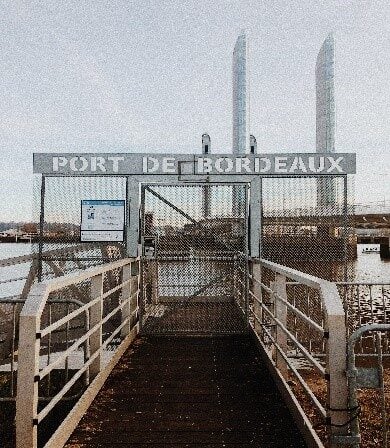Bordeaux wines: Started by slavery
During my visit to Bordeaux, I wondered about the magnificent architecture of the 18th century with its private mansions and its public buildings which make it a very beautiful architectural city. What was the source of the money that built this town – certainly it didn’t come from the early stages of the wine industry. Behind these magnificent facades hides a sinister heritage.
Slave trade
Slavery played an important role in the development of the Bordeaux economy between the 16th and 19th centuries. It was a lucrative business with French ships transporting nearly 2 million Africans to the New World via the transatlantic trade, leading over 500 slave expeditions.
In the mid-17th century, Jean-Baptiste Colbert, Louis XIV’s Minister of Finance, devised the Code Noir and it defined the conditions of slavery in the French colonial empire, including:
1. Runaway slaves absent for a month would be branded and their ears cut off.
2. The penalty for a 2 month absence was the cutting of the hamstrings.
3. A third absence leads to death.
4. Owners could chain and beat slaves, but not torture or mutilate them.
The Code Noir was considered one of the most comprehensive official documents on race, slavery and freedom ever written in Europe.
Slavery was abolished in 1794 because of the Haitian and French Revolution. When Napoleon Bonaparte came to power with the goal of creating the French Empire, one of his changes was that slavery was legal again (1804). It would take another 40 years before slavery was abolished, although it continued underground, until after the American Civil War. The French Parliament declared slavery a crime against humanity in 2001.
Pivot
French businessmen were very efficient, codifying rules in order to run a smooth and successful slave trade. At the start of the 19th century, France lost its most important colony, Saint-Domingue (present-day Haiti), and as the abolitionist movement spread across Europe, the slave traders of Bordeaux (one of the most large commercial depots for the slave trade in the world), faced pressure to move from colonial trade involving the trade of enslaved humans to another trade and wine came into the picture.
Thanks to this change, merchant families continued to prosper and accumulate wealth (17 of the 25 wealthiest families traded in both areas). The founders of the wine trade were so skilled that today, centuries later, many of these merchant families continue to hold leadership positions in the fine wine and related industries, many streets across the city bearing their name, in particular (that is to say David Gradis, 1665-1751, street which owned 10 slave ships; rue Saige; place des Quinconces, the largest square in Bordeaux, paraded the slaves in front of the public).
Recycled Business Protocols
Business practices developed in human trafficking formed the basis of the wine trade. Reused concepts include:
1. High value perishable products transported for more than a century.
2. The Bordeaux standards defined the “quality” of enslaved humans with an emphasis on source of origin (different regions of West Africa) establishing four basic quality classes.
3. Pricing mechanisms were used to establish a benchmark price for the highest quality with lower percentages for each lower quality class.
4. The idea of a microclimate (soil, precipitation, etc.) linked to a single small territory was fundamental in the definition of quality.
Using the slave trade system as a model, in 1855 the well-known wine classification system defined quality wine and the rules stipulated five quality classes from Quincoces Premier Cru to Cinquie me Cru – a system still in place today. .
Merchant families invest in winemaking, buying old vines, emptying sumps and planting new vines. Using resources from the sale of enslaved men, they built medieval-style castles and made the production and sale of wine more efficient and on a larger scale.
Most of the former large landowners saw their properties nationalized during the revolution and in the post-revolution era these vineyards and castles were for sale, which facilitated the entry of wealthy merchants into this business. Merchants also formed banks and insurance companies to organize and protect their trade.
Tourism
Visitors interested in the history of the Bordeaux slave trade should contact Karfa Diallo (facebook.com/karfa.diallo), founder of Memories and Sharing (campaigns around the memory of transatlantic slavery in France and Senegal) and founder of Black History Month in Bordeaux.
In 2009, the Musée d’Aquitaine created a permanent exhibition detailing Bordeaux’s role in the slave trade in France. The city government placed a plaque on a wharf along the river to commemorate the history of slavery. In addition, a statue of Modeste Testas, a slave bought by two brothers from Bordeaux, was erected on the bank. In addition, the city installed plaques on five residential streets bearing the names of prominent local men involved in the transatlantic slave trade.
This is a series centered on Bordeaux wines.
Stay tuned for more.
© Dr. Elinor Garely. This copyrighted article, including photos, may not be reproduced without written permission from the author.
#wine #bordeaux



Comments are closed.